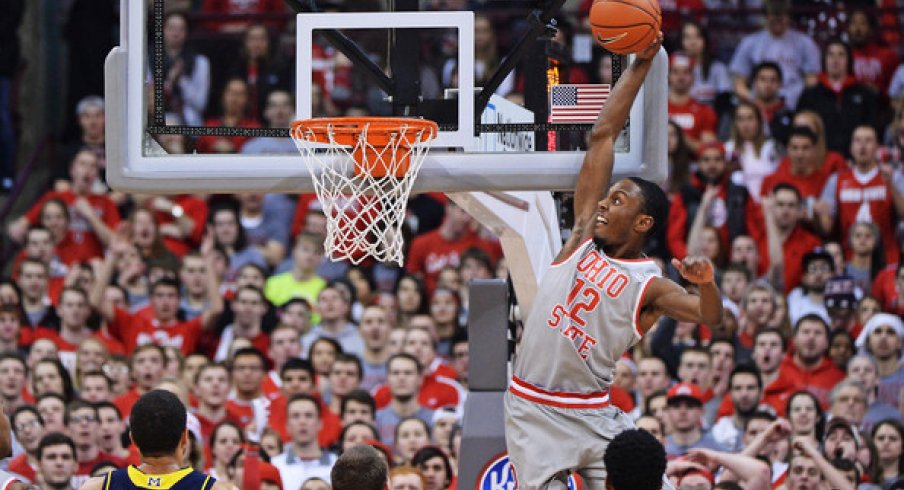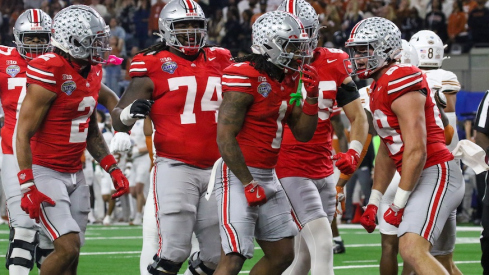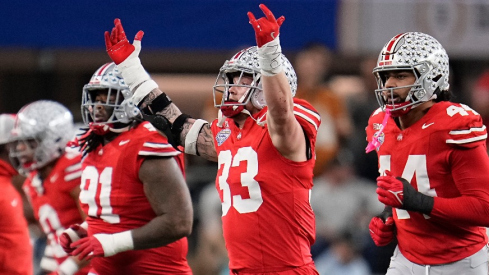Normally, Ohio State would be in the beginning stages of a Big Ten championship dash. But this season has been anything but normal. Ordinary has been tossed aside for the abnormal, atypical and unusual. Whether it’s the Buckeyes’ unpleasant January – not just outdoors – road wins becoming contagious or Nebraska’s growing list of impressive wins, the Big Ten’s 2013-14 season has been about the unexpected.
At 7-6 and all but mathematically eliminated, Ohio State’s reevaluated itself and set new goals. It’s the first time in five seasons it won’t have an opportunity to win the conference title as the calendar flips to March. Sam Thompson said prior to the Illinois game that he didn’t believe the Buckeyes were a sure-fire NCAA Tournament team, let alone a possible Big Ten champion. Beating the last-place team isn’t a boost to the resume, but 20 wins assure a place in the Big Dance unless Ohio State has a remarkable collapse.
So, what now with the 20-win threshold checked and tournament hopes satisfied?
“The focus changed a little bit,” Thompson said. “We’re all used to being in a position where we’re hunkering down and trying to win a Big Ten championship at this point in the year. Now that we no longer can do that, now that we no longer control our destiny, we really have to play for another cause. We’ve definitely talked about it. We know what we’re playing for.”
Their aim is the No. 4 seed in the Big Ten Tournament, which comes wrapped with a bow – a first-round bye. They face the winner of the 5-12 game. Ohio State is currently one game behind fourth-place Wisconsin.
“We don’t want to play on Thursday in the Big Ten Tournament, and we obviously want to win the Big Ten Tournament,” Thompson said. “It’s about sending a message every time that we step out onto the floor.”
The defense certainly made an impact on Saturday night. For the third time this season, the Buckeyes limited a team to fewer than 40 points in a game. They’re still an offensively challenged group that must be efficient and resourceful. In their final five games, that formula could lead to several must-need wins.
“We have known all year that we were going to have to rely on our defense,” senior point guard Aaron Craft said. “When we can come out on the road and hold a team below 40, that’s when we know we’re clicking. Our offense also fed off of that.”
Ohio State hosts Northwestern, Minnesota and Michigan State, and travels to Penn State and Indiana. It will be favored in at least three, if not four of those five games. A handful of victories at the tail end of the season will bolster the Buckeyes’ notable but strange resume. Lumped with wins over Wisconsin, Iowa and Notre Dame are losses to Penn State and Nebraska. However, the Cornhuskers are inching closer to ending a 16-year NCAA Tournament drought.
“Obviously you have to give the other team some credit, they’ve capitalized on our mistakes,” Thompson said. “But I think the simplest answer for how we’ve lost these games is we haven't played like ourselves. We haven’t taken care of the ball the way we need to. We haven’t executed on offense the way we need to. We haven’t executed on defense they way we need to. We haven’t had the mental toughness down the stretch where the game is on the line, we need a stop or we need a rebound or we need a bucket. We haven’t been able to capitalize on those situations.”
It’s possible Champaign, Ill., played host to Ohio State’s grand awakening. In an ugly game where neither team could create any semblance of offense, the Buckeyes turned to its usual stout brand of defense and freshman Marc Loving took over when points were at a premium.
He joked that it was as if a silverback gorilla was lifted off of him. For the team, it may have seemed like a gray whale. Ohio State, put in simple terms, is a poor shooting team. It shot nearly 50 percent from the field in the second half against the Illini and still made less than 40 percent for the game.
If you cover one eye and look at the free throw shooting stats, you’ll notice the Buckeyes are only making 69 percent of their free throws. It’s the best indicator of a team that isn’t likely to all of a sudden become good shooters in late-February.
“The biggest thing for us is to continue to get better. That’s all I am concerned with,” head coach Thad Matta said. “I think this team still has a lot of basketball to play, and that’s what excites me.”


